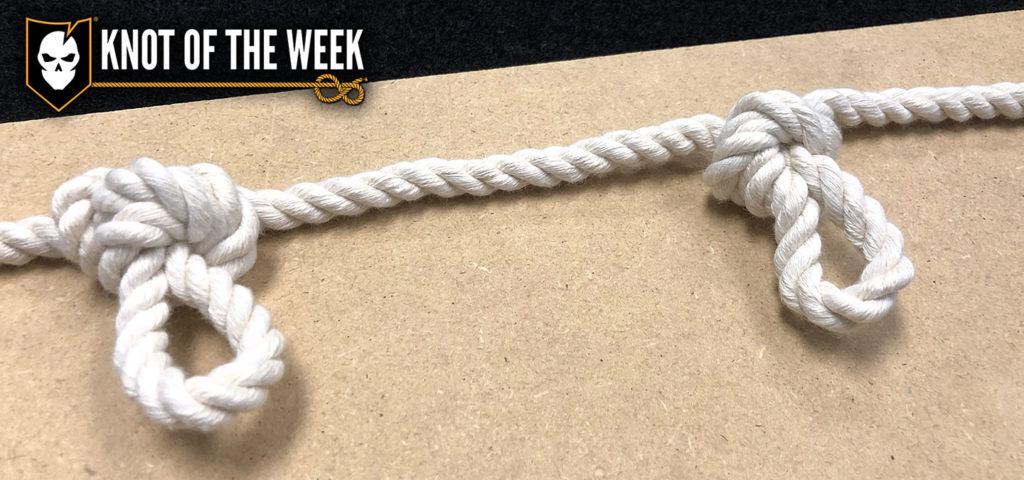The Alpine Butterfly is perfect for quickly creating a loop in a rope to use as a tie in point. The great part about this knot is that it can be tied “inline” without needing access to a working end on the rope or line.
In addition to showing how to tie the Alpine Butterfly, Bryan offers a look at how it will uniquely fit into our ongoing DIY Knot Board Display.
Alpine Butterfly » Loops
(Strength: 5/Security: 5/Stability: 4/Difficulty: 3) See below for what these ratings mean.
Also called the Butterfly Knot or Lineman’s Loop, the Alpine Butterfly is most prominently used to clip in a climber along a rope for fall protection. Speaking of climbing, the Alpine Butterfly can also be used to isolate a damaged section of a rope by placing the damaged section at the top of the main loop.
A few benefits of the Alpine Butterfly are that it won’t weaken the strength of your rope, it can be loaded from multiple directions, it’s easy to inspect (due to the easy to recognize pattern after tying) and also easy to tie with gloves on.
Ratings
Strength/Security/Stability/Difficulty
Each knot will be assigned a rating from 1-5 (1 representing the lowest score) based on the following four properties:
Strength – All knots will weaken the strength of a rope, however, there are knots that are stronger than others. The scale here will reflect how strong the rope remains with the specified knot.
Security – The security scale refers to how well the knot will stay tied, and resist coming loose under a normal load.
Stability – Stability refers to how easily the knot will come untied under an abnormal load (i.e. the knot being pulled in a direction it was not intended to) A lower score here represents instability.
Difficulty – The lower the number, the easier a knot is to tie.

